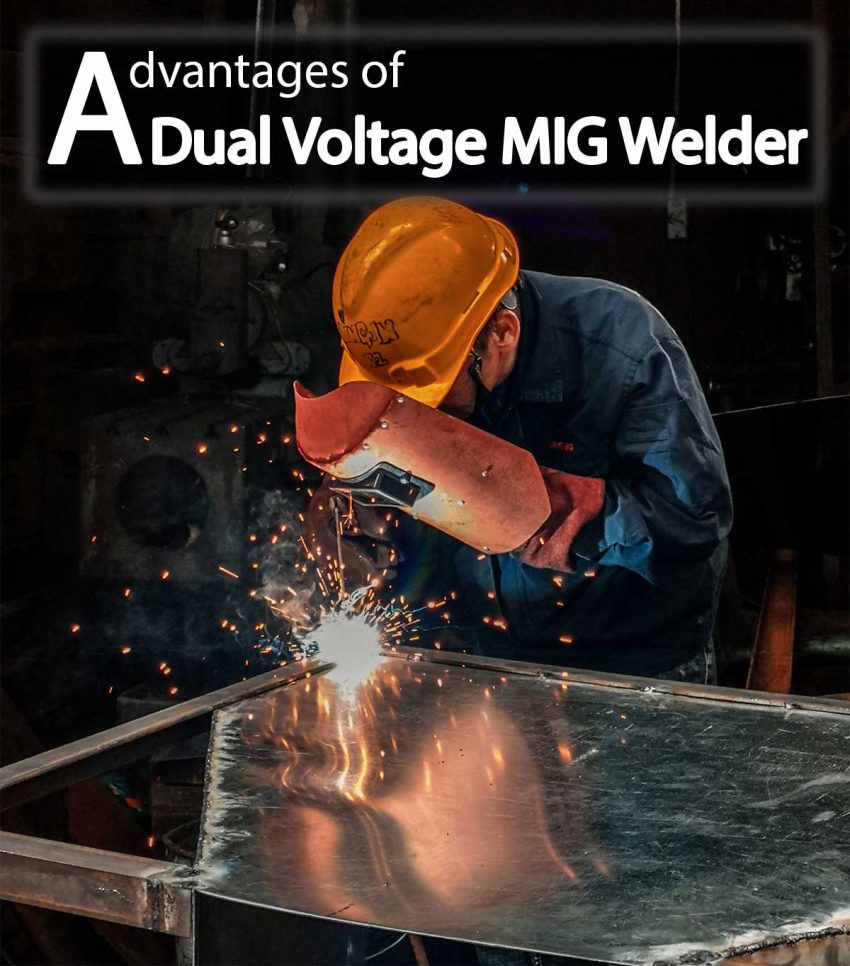Dual voltage MIG welders are popular among welders because they offer flexibility and versatility in terms of the type and scale of welding projects they can handle. The ability to switch between voltage levels means that you can use the welder in a variety of locations, including at home or on the job site.
When using a 120V power input, the dual voltage MIG welder is typically suitable for welding thinner materials, such as sheet metal or thin wall tubing. This makes it a great choice for DIY welding projects or smaller-scale commercial projects. On the other hand, the 240V power input provides more power, allowing you to weld thicker materials and complete larger-scale projects.
A dual voltage MIG welder can save you money, as you won’t need to buy two separate welders to handle different welding tasks. Plus, it can save space in your workshop or garage, as you’ll only need to store one machine.
Dual voltage MIG welder include:
Table of Contents
All of these are excellent points! The versatility and flexibility of a dual voltage MIG welder are especially valuable for welders who need to work on a variety of projects in different locations. Additionally, the efficiency and cost-effectiveness of a dual voltage MIG welder make it a great choice for both home users and professional welders who need to be able to complete different welding tasks without having to switch between multiple machines. A dual voltage MIG welder is a valuable tool that can make welding projects of all types and sizes easier and more efficient.
How to select a dual voltage MIG welder
When selecting a dual voltage MIG welder, it’s important to take your time, do your research, and choose a machine that will meet your specific welding needs. When selecting a dual voltage MIG welder, there are several factors to consider to ensure you get the right machine for your needs? Here are some things to keep in mind:
- Amperage and Duty Cycle: Consider the amperage and duty cycle requirements for the type of welding work you will be doing. This will determine the power output you need and how long the welder can operate without overheating.
- Brand and Quality: Choose a reputable brand with a good track record of producing high-quality welding machines. Look for reviews from other users to get an idea of the welder’s performance and durability.
- Wire Feeder: Check the type of wire feeder the welder has. A spool gun wire feeder may be more suitable for aluminum welding, while a push-pull wire feeder may be more appropriate for welding thicker metals.
- Shielding Gas Required: Determine the type of shielding gas required for your welding projects, and make sure the MIG welder you choose is compatible with that gas.
- Additional Features: Consider other features, such as the ability to adjust voltage and wire speed, the type of welding gun, and the size and weight of the welder.
- Cost: Finally, consider your budget and look for a dual voltage MIG welder that provides the features you need at a price you can afford.
How to setup dual voltage MIG welder?
Setting up a dual voltage MIG welder is a fairly simple process. Here are the general steps you can follow:
- Determine the appropriate voltage: The first step is to determine which voltage to use for your specific welding project. Most dual voltage MIG welders will have a selector switch that allows you to choose between 110V and 220V, depending on the available power supply and the welding requirements of the project.
- Select the appropriate wire size and type: Choose the appropriate wire size and type based on the material you will be welding. Consult the manufacturer’s instructions to determine the proper wire size and type for your specific welding project.
- Install the wire spool: Install the wire spool on the spool holder, making sure that the wire spool rotates freely and does not bind up.
- Install the drive roller: Install the drive roller that corresponds to the wire size you will be using. Make sure that the drive roller is properly aligned with the wire feed mechanism and that it grips the wire firmly.
- Thread the wire through the machine: Thread the wire through the wire feed mechanism and into the MIG gun. Make sure that the wire is properly seated in the contact tip of the MIG gun.
- Set the voltage and wire speed: Set the voltage and wire speed according to the manufacturer’s recommendations for the wire size and type you are using.
- Set the gas flow: Set the gas flow rate to the recommended level for the wire type and size.
- Test the machine: Before beginning your welding project, test the machine by making a few practice welds on a scrap piece of material. Adjust the settings as needed to achieve a smooth, consistent weld.
By following these steps and consulting the manufacturer’s instructions for your specific dual voltage MIG welder, you should be able to set up and use your machine with confidence.
Best dual voltage MIG welders
There are many great dual voltage MIG welders on the market, but here are a few of the top models that you may want to consider:
- Forney Easy Weld 261, 140 FC-i MIG Welder – This welder is lightweight and portable, making it easy to take with you on job sites or to move around your workshop. It has a maximum output of 140 amps and can weld materials up to 1/4 inch thick. It also includes a flux core wire feeder and an integrated handle with torch wrap.
- Hobart 500559 Handler 140 MIG Welder 115V – This is a reliable and versatile welder that can handle a variety of welding projects. It has a maximum output of 140 amps and can weld materials up to 1/4 inch thick. It also has a built-in wire feeder and a 5-position voltage control selector. Read Full Review.
- Lincoln Electric K2697-1: This MIG welder is capable of running on both 120V and 230V power and offers a range of features, including 6 voltage settings and wire feed speed control. It can weld up to 3/16″ mild steel in a single pass.
- Everlast PowerMIG 200: This is a powerful and reliable dual voltage MIG welder that can handle a range of materials and thicknesses. It offers precise wire feeding and a smooth arc for clean welds.

